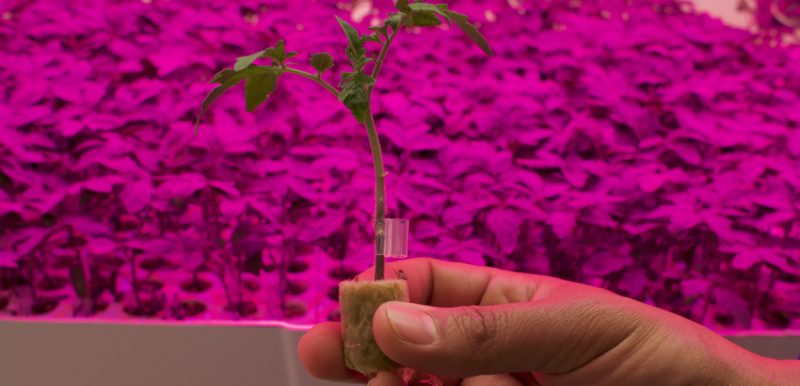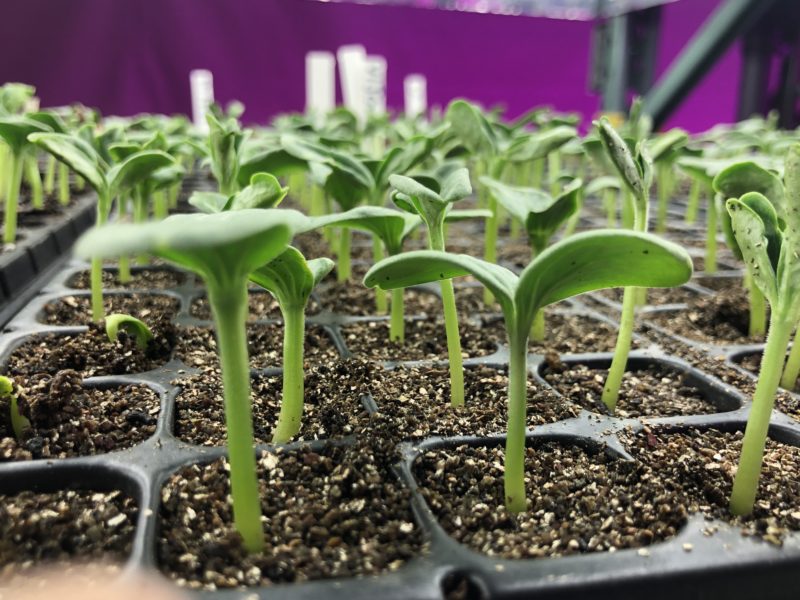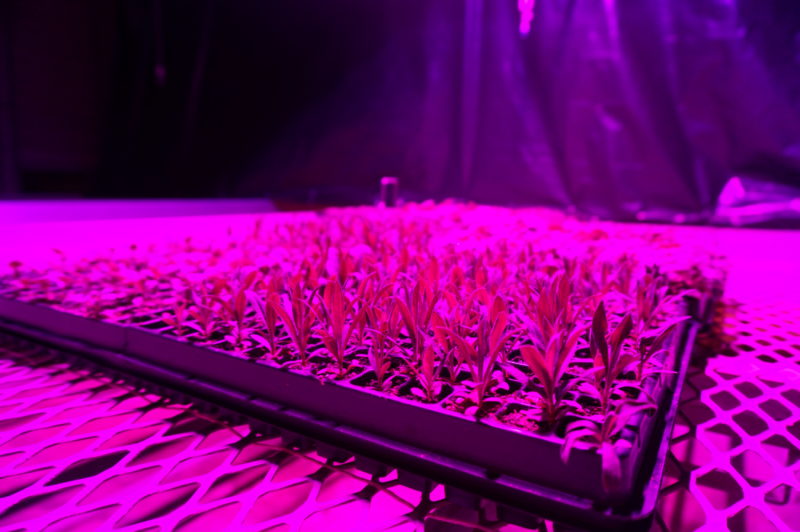
Indoor Grow Rooms Can Improve the Success of Young Plant Propagation
Although light is a critical factor in the propagation of plants
produced from seed and vegetative cuttings, it is only one of the components of propagation.
“Initially the light conditions are important, including light quality and light intensity, along with temperature and humidity,” says Ricardo Hernandez, horticulture professor at North Carolina State University. “Initially these are the most important factors. As plants start to grow and get larger, carbon dioxide and good airflow are important. We are investigating all of the components that optimize young plant production in indoor grow rooms or growth chambers.”
Hernandez is studying the impact LEDs have on the propagation of seed and vegetative starter plants.
“There are different levels for justifying the use of LEDs,” he says. “The No. 1 reason is if a grower has a high-value cutting or seed. The higher the value of the crop the easier it is to justify installing and operating LEDs. Cuttings may be difficult to root or seed may be difficult to germinate because the propagation environment is not optimum.

“For some plants the seed may cost $1 per seed. That is high-value seed so a grower wants the highest percent germination and the highest percent conversion of those plants. If the seed is inexpensive a grower may choose to simply over seed. With inexpensive seed, the grower can overcompensate for less than ideal propagation conditions.”
WHY INDOOR PROPAGATION?
Ricardo says growers are able to maintain better control in an indoor production facility than in a greenhouse.
“In a greenhouse the light is not always uniform,” he says. “There could be a week of cloudy days. If the plants are being propagated during the winter the day length is not very long. Even though there can be a good amount of light in a greenhouse, it’s not uniform and the amount of light or daily light integral, could be below what is needed. On some days there may be more than enough sunlight to propagate the plants. But on other days the light levels may be too low.
“These changing light levels can create uncertainty in regards to plant growth. There are experienced growers who understand the changes in light levels and can predict the effect it can have on their plants. They know if there are consecutive days of cloudy weather that they need to reduce the irrigation because the plants are not transpiring. They may have to make adjustments to their orders because the plants may not be ready to transplant or ready to ship.”
To remove that uncertainty and to make sure that deadlines for transplanting or shipping are met, growers can increase their control and reduce the variability.
“With an indoor production system the temperature is not going to fluctuate much,” Hernandez says. “In indoor grow rooms equipped with LEDs the light intensity and the amount of light per day is not going to fluctuate unless there is a system failure. The plants will be ready to transplant or ship on schedule. This makes it so much easier for growers to plan their orders and deliveries by eliminating some of the uncertainty.”
CONSISTENT ENVIRONMENTAL CONDITIONS, CROPS
Many growers choose to propagate in greenhouses because the sunlight is free.
“Electrical lighting is one of the biggest costs when growing
indoors,” Hernandez says. “However, when producing vegetative or seed plugs the plants are smaller and they can be grown at a higher density. On a per square foot basis the plants can be grown in a vertical farm setup with multiple layers. These are high-density, high-value plants. The cost of light per plant is very little.
“It’s a different situation if a grower is producing lettuce indoors because the plants need more space. The cost of light per plant is higher as the plants increase in size.”
In the case of grafted transplants, Hernandez says he has been able to speed up the growth of plants produced in indoor grow rooms compared to grafted transplants grown in greenhouses.
“We have been able to increase production 20% faster using indoor production,” he says. “We are able to increase the dry mass and grafted transplants are ready to go into the field faster than greenhouse-produced grafted transplants. We can repeatedly do this. We’re able to guarantee that the plants are going to be ready to be transplanted on time.”
Hernandez says cloudy weather can wreak havoc on grafted transplants grown in greenhouses under natural light.

“A greenhouse hit with a week of cloudy weather for grafted transplants on a three-week production cycle, the plants won’t be ready to ship or be ready to transplant,” he says. “This is also going to impact the workers who are doing the grafting. This means the crop is going to require more lead time in order fill customers’ orders. Growers are going to be trying to compensate for those things that they don’t have any control over.
“Growing indoors, it’s not going to matter if it’s cloudy, raining or cold. The production and quality of the plants are going to be consistent. The lead time for the crops also becomes smaller and not as much of a buffer is needed because the environmental conditions are consistent. The only buffer that’s needed is if there is any variability between cultivars. If growers maintain the proper environment in indoor grow rooms with the right controls and right checkpoints for quality the growers have more control than in greenhouses.”
ADDING SUPPLEMENTAL CARBON DIOXIDE
Even though light is one of the most important factors in the propagation of young transplants, Hernandez said growers may have another option when trying to increase growth.
“Speeding up growth with more light will increase capital expenditures to buy LED fixtures along with the increased cost for electricity,” he says. “Growers may be able to increase plant growth by keeping the same level of light, but increasing the level of carbon dioxide. Adding supplemental carbon dioxide in an indoor facility is very affordable. If a grower’s main concern is the cost of the electricity and light fixtures, adding carbon dioxide may be able to overcome that issue.
“If growers’ main objective is to finish the plants faster, they may not be concerned about paying for supplemental light and carbon dioxide if that allows them to produce three more crop cycles a year. The plants could be pushed to develop their roots faster by adding supplemental carbon dioxide. By adding carbon dioxide, the propagation time is shortened.”
For more information: Contact Ricardo Hernandez, North Carolina State University, Department of Horticultural Science, Raleigh, North Carolina; rhernan4@ncsu.edu; https://ceh.cals.ncsu.edu; https://graftedgrowers.com.


 Video Library
Video Library 




















